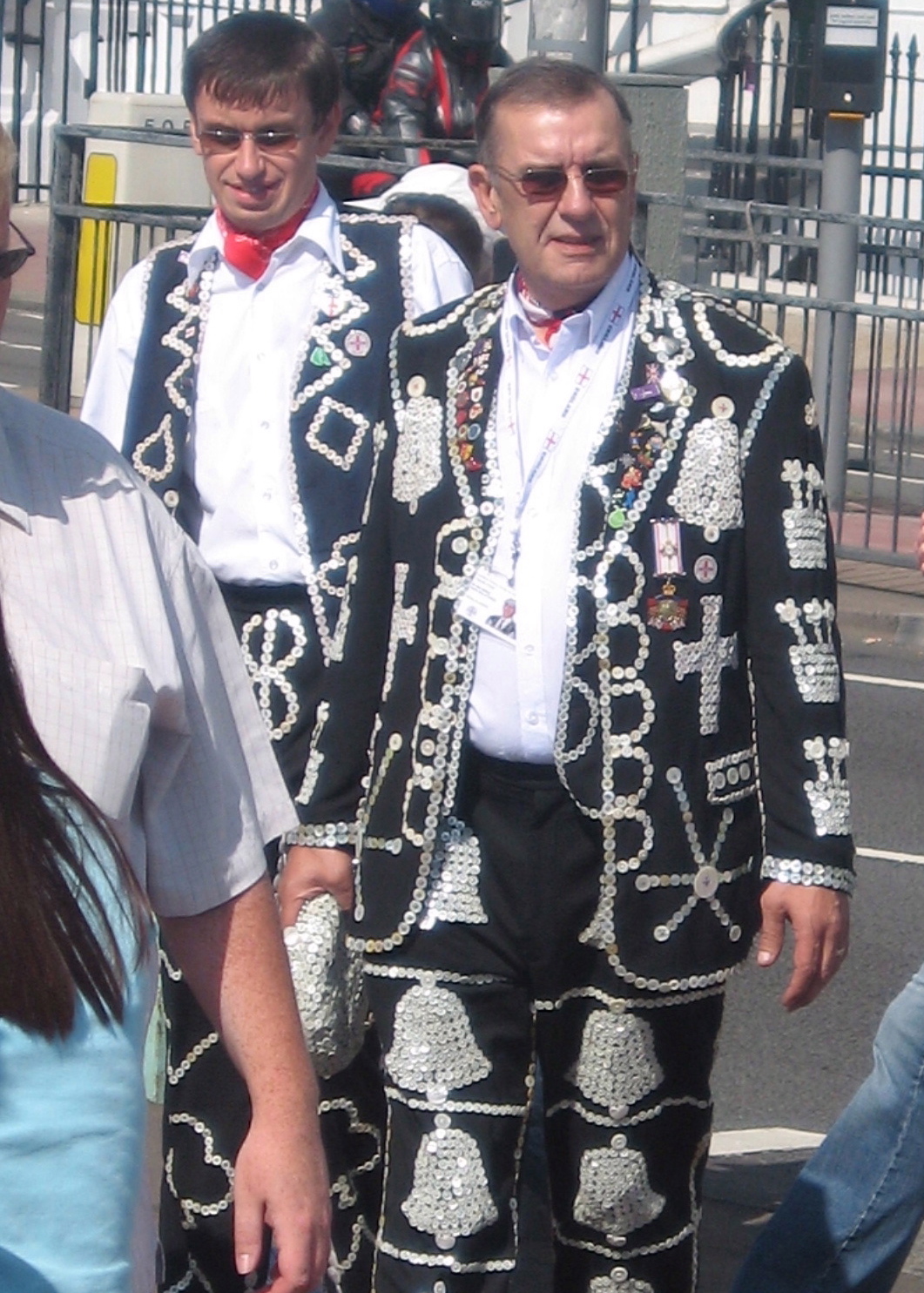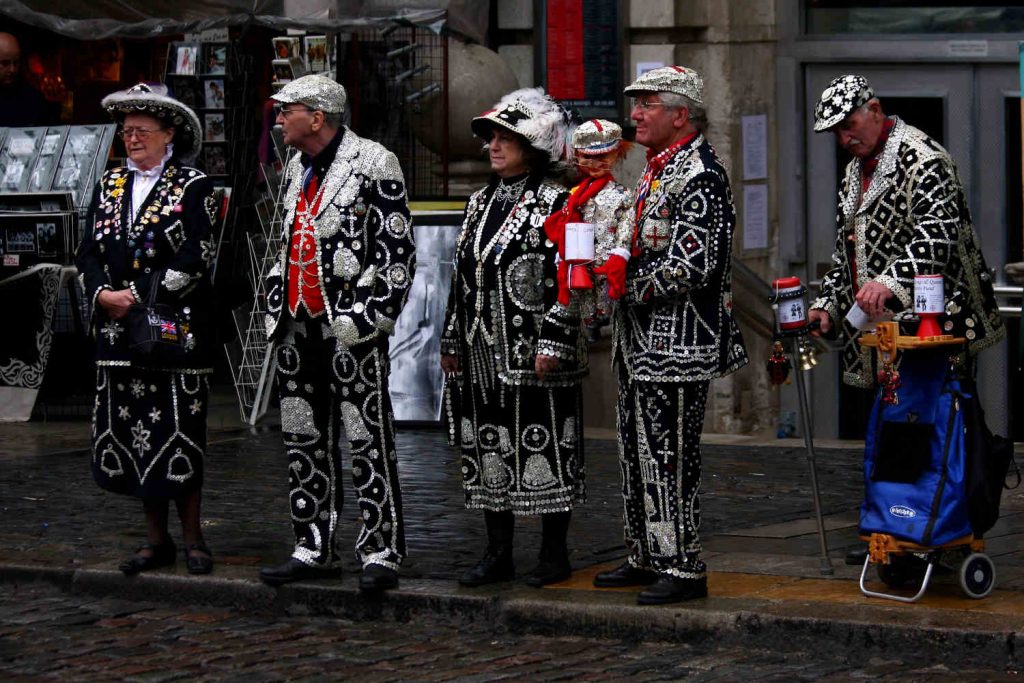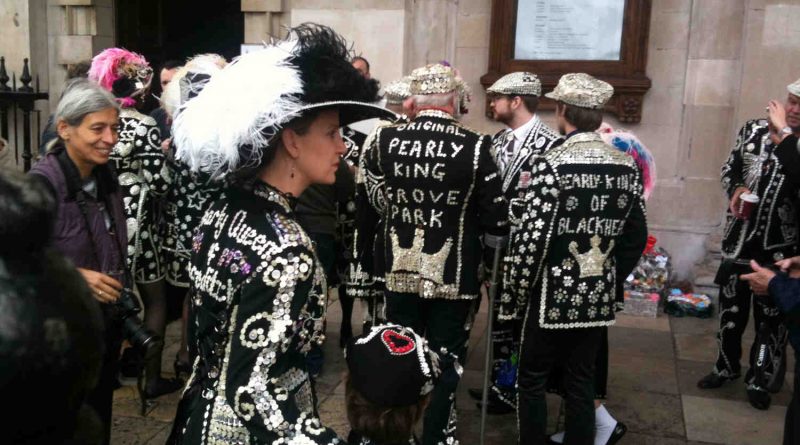The real history of the Pearly Kings and Queens
If you live in the East End, you may have come across groups of men and women in black, formal clothes embellished with gleaming mother of pearl buttons in intricate designs. They have become an iconic part of East End culture and heritage. You’ll spot them at festivals, parades and even horse races. But who exactly are the Pearly Kings and Queens?
The Pearly Kings and Queens are a famous symbol of Cockney culture and the second oldest charity in London, but what’s the real story behind the Pearl monarchy? How are they still spreading the original Pearly message? And how much do the suits really weigh?
We spoke to Lorraine Sadler, the Pearly Queen of Tower Hamlets, whose family goes back six generations in Pearly monarchs to one of the original Kings.
The history of the Pearly monarchy
The group was founded in 1875 by Henry Croft, who was born and raised in a Victorian workhouse orphanage on Charles Street, Somerstown.
When Croft was 13 years old, he left the orphanage to become a street sweeper and rat catcher, working alongside the costermongers – market traders who sold fruit, vegetables, fish and other produce (‘coster’ meaning apple and ‘monger’ meaning seller).
Croft became fascinated with the costers and their way of life. The costers were a tough sort. They spoke in a language of their own (Cockney rhyming slang) and followed a ‘king’ – a community leader elected to organise them, keep the peace with other sellers and stand up to the authorities on the other costers’ behalf.
They were also known for lining their trousers, pocket flaps and caps with mother-of-pearl buttons. The more successful a coster was, the more buttons he wore, and so the phrase “Flash Harry” came about. The costers’ bling was also a cheeky imitation of West End society, who had developed a fashion for wearing pearls with their Sunday best.
Another aspect to the costers’ culture admired by Croft was their support of each other. Lorraine Sadler explains: ‘Market traders would help each other out so they could feed their families if one of them was down. Croft loved that idea.’
There are many urban myths about what happened next, but the story goes that Croft came across a shipload of mother-of-pearl buttons abandoned on the banks of the Thames. Wherever he found them, Croft sewed 60,000 buttons the size of pennies onto a full dress suit and top hat. Smothered with pearls, not a spot of the fabric on Croft could be seen.
Wherever he went in his suit, Croft would collect money to help his childhood orphanage. Within the patterns of the buttons were symbols and messages, a way of spreading his charitable message and encouraging other people to give. One pattern read: ‘All for charity and pity the poor.’
After receiving huge amounts of donations, Croft began also collecting for children’s hospitals, local charities and the homeless. Eventually Croft drafted in the costers and their wives to help him with his charity work, calling themselves the Pearly Kings and Queens.
Pearly families
By 1911, every metropolitan London borough (there were 28 at the time) had been assigned a Pearly King and Queen. Pearly couples monarchs, Pearly families, all brought up to help the disadvantaged in their area. Since then, the borough titles have been passed down from generation to generation.
Sadler belongs to one of the original Pearly families. She is the great granddaughter of George Hitchin, who was crowned the Pearly King of Dalston in 1884, and the granddaughter of George Jn, who raised thousands of pounds for charity by playing the accordion and the piano in pubs and clubs.
‘I’m very proud of my family history and every family wears a special broach to show what family they’re from,’ Sadler says. ‘And when you put a suit on, what you’re telling people is that everything you’re doing is for charity.’
Sadler was crowned as the Pearly Queen of Tower Hamlets in 2012 in a ceremony alongside nine other Pearlies. ‘It’s just like watching the Queen’s coronation – you’ve got your suits, you’re blessed by the vicar and then your crowns are put on your head by a Pearly standing behind you.’
But the tradition is slowly dying out. Where there used to be 400 original Pearlies, there are now between 40 and 50.
‘You’re either born into it or you marry into it, like I did with my husband,’ says Sadler, who had a Pearly wedding in 2013. ‘We are so lucky in our association that everyone of us somewhere is related to one of the others.’
The Pearly outfits
Pearly suits and dresses are worn at charity events, christenings, weddings and funerals. They can be covered in up to 30,000 buttons and weigh up to 30kg. Like Croft’s original suit, buttons are used to create symbols: hearts for charity, wheels for the meaning of life, and doves for peace.
The tradition, Sadler says, is that every person makes their own suit. ‘When a Pearly dies,’ she says, ‘we strip their suits and we share out their buttons so we always have a part of them still on us. I’ve got buttons from my grandparents, my aunts, my uncles, my mother.’
Alongside their ongoing charity work, the Pearlies get together twice a year for the Pearly memorial service in May and for the harvest festival, both of which are held at St Martin-in-the-Fields church.
The harvest festival involves marching bands, donkeys (which used to pull the costers’ carts), morris men and women, and maypole dancers. Since the Pearlies’ conception, all proceeds and food donations have gone to the homeless.
The Pearlies’ work today
Today’s Pearly Kings and Queens continue the work of the original monarchy. They dedicate their lives to raising money, supporting children’s hospitals, special needs schools and research charities, among others.
Sadler wears her outfit about once a month, donning the pearls to fundraise and to visit children’s hospices. Talking in schools is also incredibly important to her – educating children about the ethos of the Pearlies, teaching them about the heritage of the East End, and speaking in some cockney rhyming slang.
But the heart of the Pearlies lies in charity. ‘I go out into my borough because I believe in giving back,’ Sadler says. ‘I put my suit on and I put my suit on with pride. It’s about helping those people who can’t help themselves. If I can help, I will.’
Sadler’s children and grandchildren have inherited their Pearly titles with delight, continuing to help their communities like their ancestors did. ‘This is what I know, I don’t know nothing else,’ says Sadler. ‘This is what I was brought up to do.’


If you liked this article, you might like to read about a very East End wedding at St. Paul’s Bow Common.



I was told that my great aunt was a pearly Queen,her name was Eatwell I don’t know her firstr name
My name is Brian Walton and I was born in Hackney, and me old Mum used to tell me that You could hear Bow Bells from the Mothers Hospital which is where I should have been born, but I had to born at home which was in Glenarm Road, and is actually closer to the Bells by about half a mile, so can I please be a Cockney. Me old Dad used to talk the talk all the time, and I used to think that he was posh… I lived in Hackney until a few years ago when my wife and I retired and bought a house on The White Cliffs of Dover, where we now help run the local branch of The Royal British Legion, we being Dover White Cliffs. I am the Entertainments Manager, I used to be a Warners Green Coat, and DJ, and hope to have a slot on Dover Local Radio very soon. I have met quite a few of the Pearly Kings and Queens at The Moths Club (Memorable Order Of Tin Hats, for Army and services.) in Hackney, where they would drop in from time to time. Once we get out of Lockdown maybe you ask some of your Royals to pay us a visit, it would be fantastic to meet up again. Biro (my pen name)